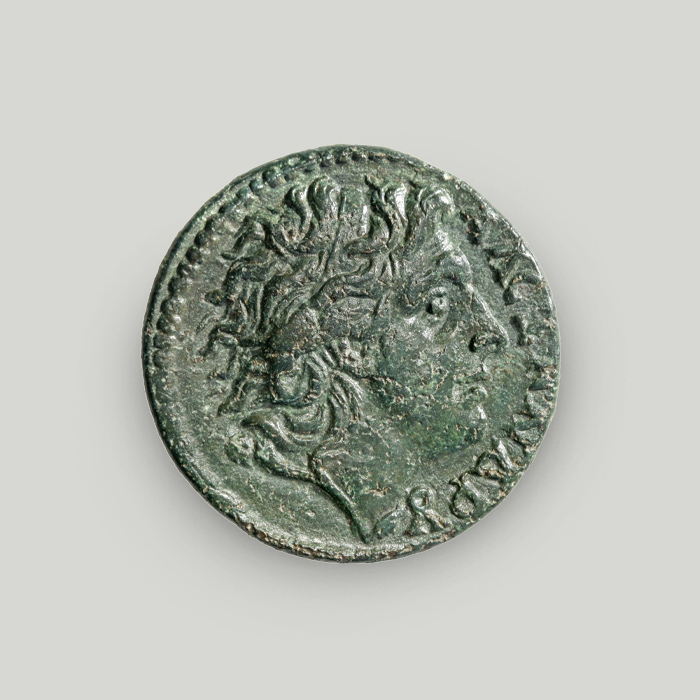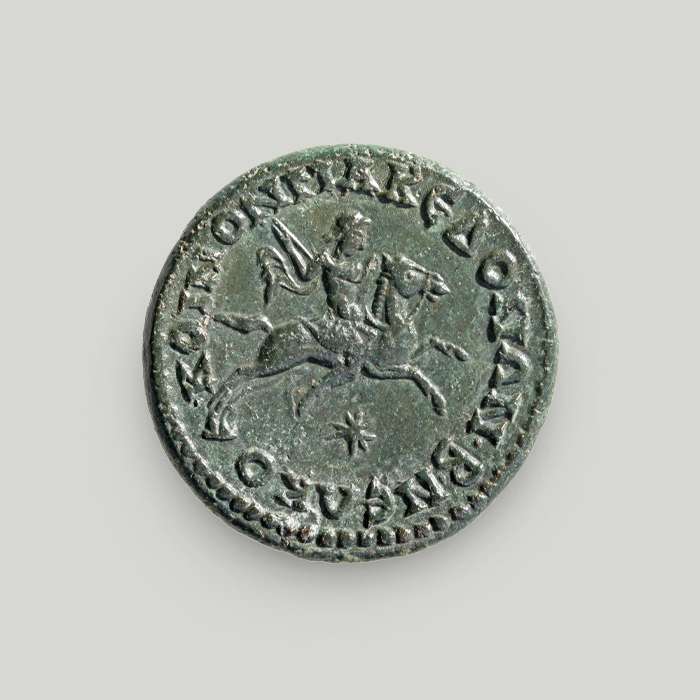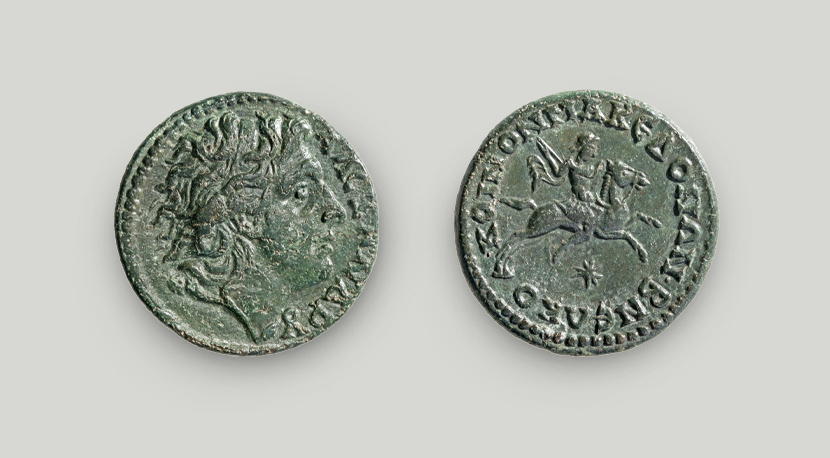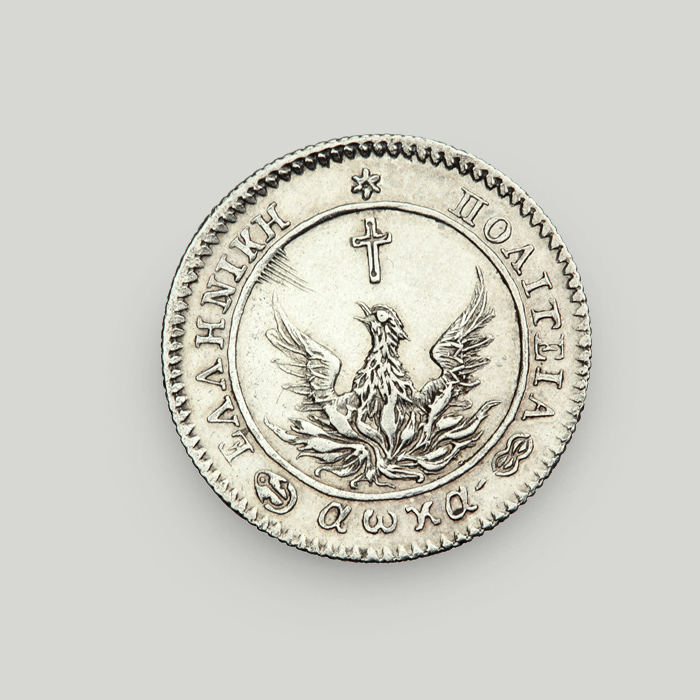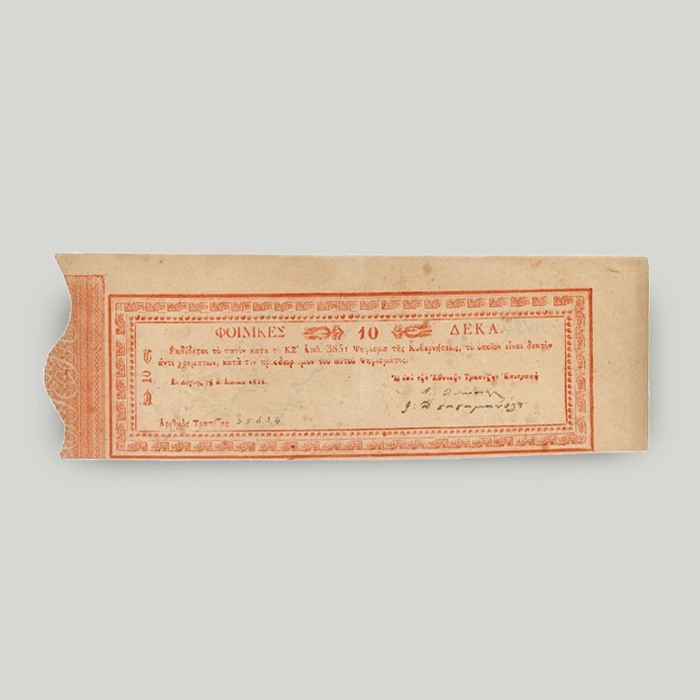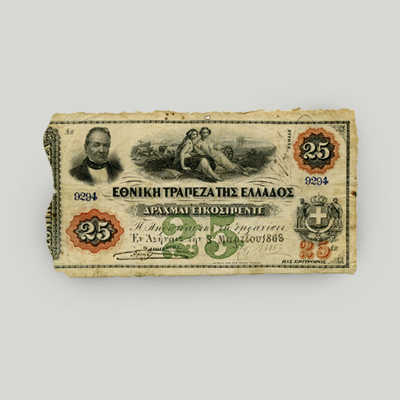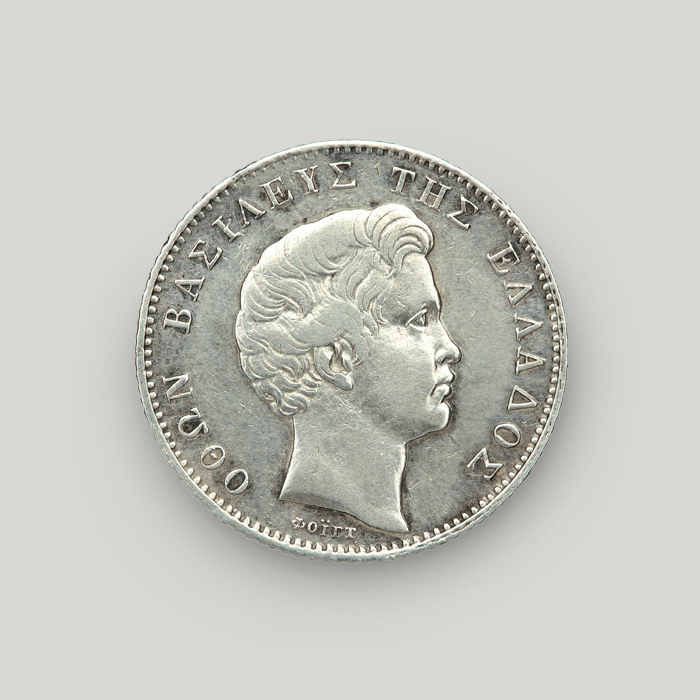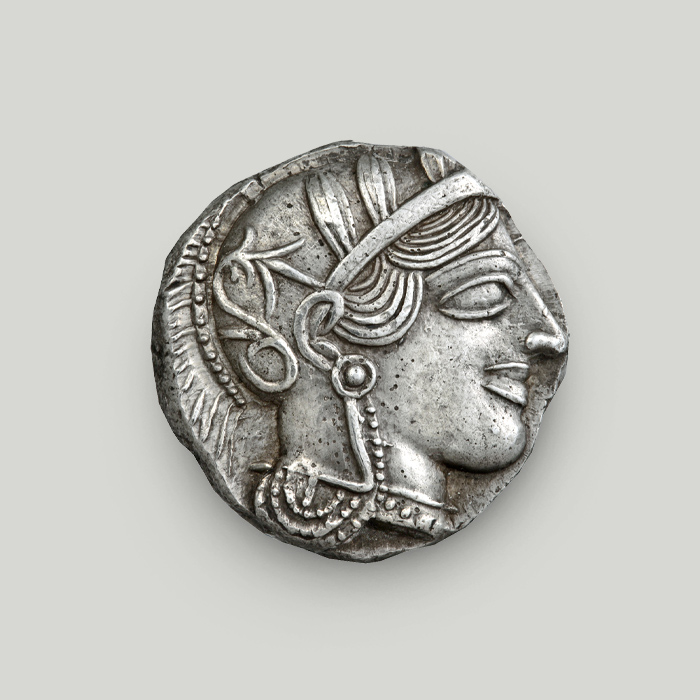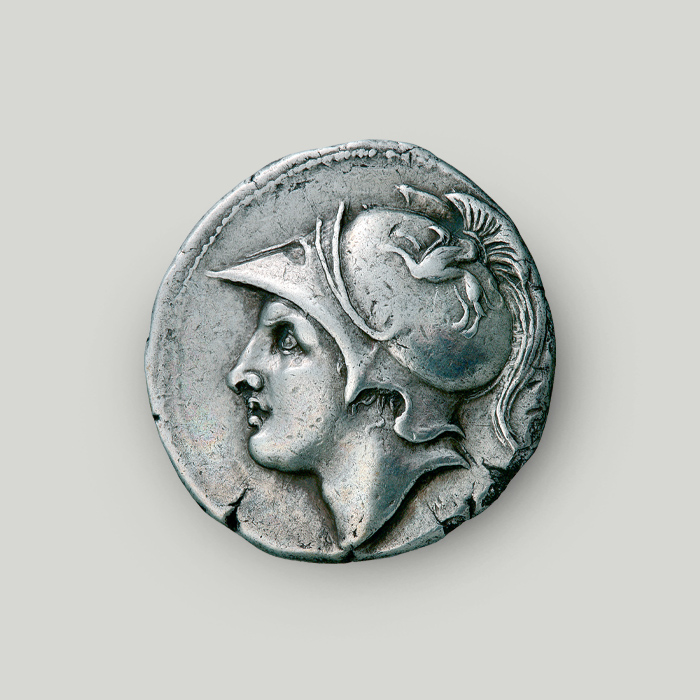Bronze coin of Gordian III
This bronze coin was issued by the League of the Macedonians during the reign of Roman emperor Gordian III. It was inspired from the glorious past of Macedon and was a means of propaganda for the emperors. It depicts Alexander the Great and his steed Bucephalus, one of the most famous horses in human history.
Obverse
Head of Alexander the Great in profile facing right, wearing a diadem. The legend on the right reads ΑΛΕΞΑΝΔΡΟΥ (of Alexander).
Reverse
Alexander galloping away on Bucephalus. A star is depicted under the main type. The legend all around the type reads ΚΟΙΝΟΝ ΜΑΚΕΔΟΝΩΝ Β ΝΕΩΚΟ (League of the Macedonians).
The cult of Alexander in the Roman Empire
Gordian III was the youngest legitimate Roman emperor. He was proclaimed emperor at the age of 13. His reign coincided with a period of great uncertainty for the people of the Roman empire. This caused them to seek solace in the glorious past.
Hence the increased popularity of the cult of Alexander the Great, especially in his homeland of Macedon. The cult spread far and wide. The cities of Thessaloniki and Veria even organised the Alexandria, a festival in honour of Alexander.
The League of the Macedonians
The League of the Macedonians was a confederation of cities in Macedon formed during the reign of Philip V. It remained dormant for some time after the Roman conquest.
It was revived under the Roman emperor Claudius, who promoted and supported the stimulation of a sense of national identity in the conquered territories, now provinces of the empire.
However, the League was less relevant compared to the past. It had lost its political power and was more of a religious institution. Its main purpose was to spread the imperial cult and organise sports events in honour of the emperors.
The types on coinage under Gordian III
The popularity of the cult of Alexander was reflected in the coin types issued by the League of the Macedonians.
The glorious past of Macedon was an excellent means of imperial propaganda and Roman emperors desired to be identified with Alexander. So did Gordian III.
When Alexander met Bucephalus
When Philip II of Macedon wanted a horse for his 15-year-old son Alexander (later Alexander the Great), he looked no further than the Thessalian plain.
He had heard that the horse dealer Philonicus was selling a colt for the amount of 13 talents. But the horse was wild and nearly untameable. He would not take a rider or react to a human’s instructions.
Philip found the horse too wild for his liking and asked for it to be taken away.
Alexander was there, however, and remarked: “What a shame to lose such a fine horse out of sheer inexperience and spinelessness!”
Philip did not answer at first. But Alexander would not stop, and Philip lashed out saying: “How dare you criticise your elders! Do you think you know better or can you actually bend the horse to your will?”
Alexander replied, “I know I could at least train this horse more effectively.” Philip asked what price he would be willing to pay for his insolence if he failed. To which Alexander replied: “By Zeus, I will pay for the horse myself if I fail.” Everyone laughed.
A taming worthy of a king
Alexander observed that the horse was distressed by its own shadow. Grabbing the reins, he turned it so that it faced the sun.
After running alongside the galloping horse for a while, he tried to soothe its hot anger by petting it. Then, he simply jumped astride. Ever so gently, he pulled and tightened the reins without whipping or spurring the horse. And when the animal looked less menacing, he let go and let it gallop, this time shouting the instructions louder and kicking on its sides.
At first, Philip and his attendants were tense and did not say a word. But as soon as Alexander returned, looking composed and happy, everyone cheered.
His father is said to have teared up with joy and, once Alexander was back on the ground, he embraced him and said, “Son, seek out a kingdom worthy of yourself, for Macedon is too small for you.” (Plutarch, Alexander 6.1-6.8)
A match for life
Bucephalus was Alexander’s loyal companion for about 20 years. It shared his burden through countless hardships and faced as many dangers. No one but Alexander ever managed to ride it.
Legend has it that, after his victory over the Indians at the Hydaspes River, Alexander founded a city called Bucephalea on the west bank of the river. The city was named in memory of his loyal steed, who died there of exhaustion and old age. By then, Bucephalus was already 30 years old.
It remains one of the most famous horses in human history.
The Alpha Bank Numismatic Collection is not open to the public.
Research visits to the Numismatic Collection can be organised upon request.
Contact us to book your visit.
